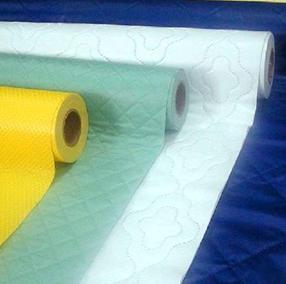From the second quarter of 2014 to the present, the price of domestic cotton yarns has obviously declined, but it is still difficult to fight mixed-spun cotton yarns and imported cotton yarns with cost advantages. The decline in the price of pure cotton yarns should be of great benefit to the big clothing and home textile companies, but both are calm and coping. The market's acceptance of cotton substitutes, the acceptance of blended products, and the backlog of apparel companies have made it difficult for the already-declining cotton yarns to regain market share. Cotton Ladies Blouse,Ladies Blouse,Custom Blouse,Print Blouse SHAOXING OSTAR APPAREL CO., LTD. , https://www.ostarappale.com
Cotton yarn analyst Xu Xiaomiao said in an interview with reporters that from the second quarter of 2014 to the present, domestic demand for pure cotton yarn was not strong, and the yarn price dropped more significantly. “At present, domestic yarn prices are still the most expensive, followed by imported yarns. The price of blended cotton yarn is the cheapest, and the advantages are self-evident.â€
According to the monitoring data, the average price of conventional comb-spinning spinning yarns in May dropped by around 4% year-on-year, with a month-on-month decline of 1-1.2%, and declines in 3-4% for other specifications.
Xu Xiaomiao told reporters that cotton has always been China's traditional textile raw materials. Since the country began implementing the temporary storage policy in 2011, the cotton market price has risen. In 2013, some agricultural products, including cotton, canceled temporary storage policies and changed to direct planting subsidies.
"Although the policy is changing positively, it is not a matter of overnight if the price goes up." One industry insider told the reporter frankly.
Customs data show that the number of imported yarns in China has increased year by year. Imports of 902,100 tons in 2011, 1,622,200 tons in 2012, and 2,098.99 tons in 2013, and 680,600 tons in the first four months of this year. Xu Xiaomiao said that even if imported cotton yarns have a price advantage over domestically produced cotton yarns, the sum of the two is still declining, because both are less expensive than the blended yarns.
“The market for blended yarns is relatively high, and the profits of the products are high.†Xu Xiaomiao told reporters that from the 2013 estimation data, the profit per ton of blended products was more than 400 yuan, while the high-yield yarns of 32 cotton yarns were taken as an example. The average annual profit level is a loss of 850 yuan per ton. With such a high profit margin, manufacturers can't be moved.
"As the major consumer of pure cotton yarn, apparel and home textile companies should generally be able to rationally face the decline in the price of pure cotton yarn," said one industry analyst. The person in charge of the apparel and home textile companies interviewed said that while the prices of raw materials are declining, the extent of the impact on companies is still debatable.
A person in charge of apparel companies revealed to reporters that the current apparel industry is in a sluggish state. Under the premise of a large backlog of products, companies will not rush to expand their purchases due to lower raw material prices.
Pei Ming, director of public relations at Mengjie Home Textiles, said in an interview with the reporter that according to the data released by the home textile industry, there are currently 10,000 companies with production qualifications in the country, and it is difficult to count the number of family-scale workshops that cannot be scaled. “Although consumers are more aware of the higher comfort of pure cotton, there are also many markets for blended products because of price considerations and other factors.â€
February 08, 2021